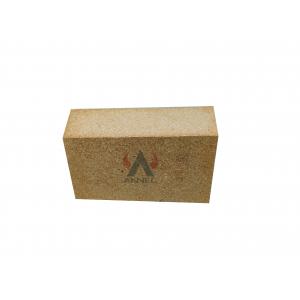Lite refractory fire clay bricks with Cheap, durable, fire, insulation, sound insulation and moisture absorption advanta
Add to Cart
Lite refractory fire clay bricks
Standard sizing:37 holes (φ20) checker brick ,Special size and OEM
Service also provide!
The size is precise, providing kinds of shapes according to
customer's drawing
Definition:
Lite refractory fire clay bricks refer to light-weight thermal insulation brick products with Al2O3
content of 30%-46%. With clay clinker or light clinker and plastic
clay as the main principle, it is usually produced by the
combustible method. It can also be produced by the chemical method
or foam method to form a porous structure. The use temperature is
1200-1400℃. The refractory is characterized by high porosity,
generally 40%-85%; low bulk density below 1.5g/cm3; low thermal
conductivity, generally below 1.0W (m.K).
Compared with ordinary clay bricks, light clay bricks are lighter
in weight. The heat-insulating refractory products with Al2O3
content of 30%~48% made of refractory clay as the main raw
material. Using refractory clay, floating beads, and refractory
clay clinker as raw materials, adding binders and sawdust, after
batching, mixing, molding, drying and firing, products with a bulk
density of 0.3~1.5g/cm3 can be obtained. It accounts for more than
half of the total output of heat-insulating refractory bricks, with
tiny pores evenly distributed inside, with a high porosity.
Therefore, it can be ensured that the furnace wall loses less heat,
and the fuel cost will be reduced accordingly. Lightweight clay
bricks also mean less heat storage, so heating and cooling are
faster, allowing faster periodic operations. Lightweight clay
refractory bricks are suitable for the temperature range of
900℃~1650℃.
Prformance:
The fire resistance of clay bricks is comparable to that of silica
bricks, up to 1690~1730℃, but the softening temperature under load
is more than 200℃ lower than that of silica bricks. In addition to
the high refractory mullite crystals, the clay bricks also contain
nearly half of the low melting point amorphous glass phase.
In the temperature range of 0~1000℃, the volume of clay brick
expands evenly with the increase of temperature. The linear
expansion curve is approximately a straight line, and the linear
expansion rate is 0.6%~0.7%, which is only about half of that of
silica brick. When the temperature reaches 1200 ℃ and then continue
to rise, its volume will start to shrink from the maximum
expansion. The residual shrinkage of clay bricks leads to the
loosening of mortar joints in masonry, which is a major
disadvantage of clay bricks. When the temperature exceeds 1200°C,
the low melting point substances in the clay bricks gradually melt,
and the particles are tightly pressed against each other due to
surface tension, resulting in volume shrinkage.
Advantage:
1. Higher refractoriness,
2. High-temperature endurable.
3. Good corrosion resistance.
4. Good spalling resistance and wear resistance.
5. Good thermal shock resistance.
6. Higher mechanical strength.
7. High-temperature creep rate is low.
8. Good volume stability at high temperature.
Application:
Iron&steel making industry:Blast furnace,hot blast furnace(stove),pellet shaft furnace,hot metal ladle,steel ladle, tundish,heating furnace,soaking pit furnace,heat treatment furnace,refining furnace,reheating furnace,metal mixter furnace,annealing furnace, cupola furnace,electric arc furnace,induction furnace,AOD furnace,VOD furnace,etc thermal technology equipment.
Non-ferrous Metal industry:Smelting furnace,refining furnace,reverberatory furnace,converter furnace.
Building materials industry:Cement kiln,glass kiln,ceramic kiln,lime kilns,kiln car,tunnel kiln
Energy & Incineration:Coke oven,general boiler,power,generation,boiler,circulating fluidized bed boiler,electric furnace,carbon rosating furnace,waste incinerators.
Others:Petrochemical industry furnace.
Product Description:
Machine pressed fireclay refractory brick | ||
Mark | Unit | RN-42 |
Al2O3 | % | ≥42 |
Refractoriness | ℃ | ≥1750 |
Apparent porosity | % | ≤24 |
Bulk density | g/cm3 | ≥2.3 |
Cold crush strength | Mpa | ≥29.4 |
0.2MPa, Refractoriness under load | ℃ | ≥1400 |
Permanent linear change | % | 0.1~-0.4 |
Packaging and shipping
Standard packing: waterproof inner packing + outer packing suitable for container transportation



